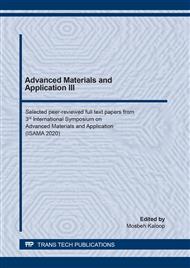p.118
p.125
p.131
p.137
p.143
p.148
p.154
p.160
p.165
Reviews on Different Types of Rooftile BIPV: Materials Point of View
Abstract:
Building integrated photovoltaic (BIPV) is defined as the integration of photovoltaic (PV) modules into the building envelope (in this case the rooftile) to generate clean and environmental-friendly electricity from the sun radiation. The architectural integration of PV collector modules in new construction makes possible to create glazed surfaces which, besides being an aesthetical and functional innovation, generate electricity, that is allowing the realization of solar control and electric range with consequent energy savings. However, up until now, there have been limited studies that analysed BIPV from its materials point of views. This paper aims to expose rooftop BIPV materials that further might be used to replace conventional rooftiles such as terracotta or slate, concrete, plastic, and clay tiles. The flat rooftiles of monocrystalline-, polycrystalline-, and a-silicone based BIPV cells are being considered in this paper. Their benefits and drawbacks are also put into account. The parameters that were compared are materials, their physical layouts, and the transparency and output power.
Info:
Periodical:
Pages:
165-169
Citation:
Online since:
August 2020
Authors:
Keywords:
Price:
Сopyright:
© 2020 Trans Tech Publications Ltd. All Rights Reserved
Share:
Citation:


